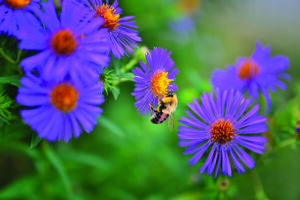Try growing some of your own food this summer.
Enjoy delicious produce, save money, and reduce climate-warming gas emissions associated with long-distance transportation and packaging of store-bought foods.
Most vegetables and annuals can be planted this month.
Keep yourself current this month with the following checklist:
Week One
• Mow the lawn often enough so you never have to cut off more than a third of the grass in order to maintain the recommended height. Always keep your mower blades sharpened. 
• If you notice older leaves of holly and magnolia beginning to yellow and drop do not be alarmed. This is a natural process of regeneration and does not indicate a problem with the trees.
Week Two
• Don’t wait too long to sow vegetables with a longer time to maturity, such as sweet corn or beans, or they may not fully mature before the fall frosts arrive. Make sure the soil temperature is warmer than 60 degrees when planting tomatoes and peppers.
• Try to get all your perennial plants into the ground before the hot weather sets in. This will give your plants time to root and become ready for the long hot summer.
Week Three
• When nighttime temperatures stay steady at 60 degrees F and above, start moving your houseplants outdoors. Place them in indirect light in a sheltered spot for the first week. Check water requirements as air temperatures rise.
• To keep roses looking good and producing flowers, deadhead religiously, especially hybrid tea roses and grandifloras. Always prune to down to a five-leaf segment, and cut at a 45-degree angle.
Week Four
• Good plant growth is essential to the development of a healthy root system. When planting new plants, try Espoma’s Bio-tone starter, which has living microbes that have been enhanced with humates and a synthetic nitrogen source. If a good soaking rain is not present every week to 10 days, water planted beds gently and slowly, long enough to allow 1 to 2 inches of water.
• Attract pollinators and natural pest enemies to your landscape by planting a wide variety of flowering annuals and perennials, including native plants that will bloom over the entire growing season.
(Editor’s Note: Ken Morgan is the owner of Robin’s Nest Floral and Garden Center in Easton, Md.)



